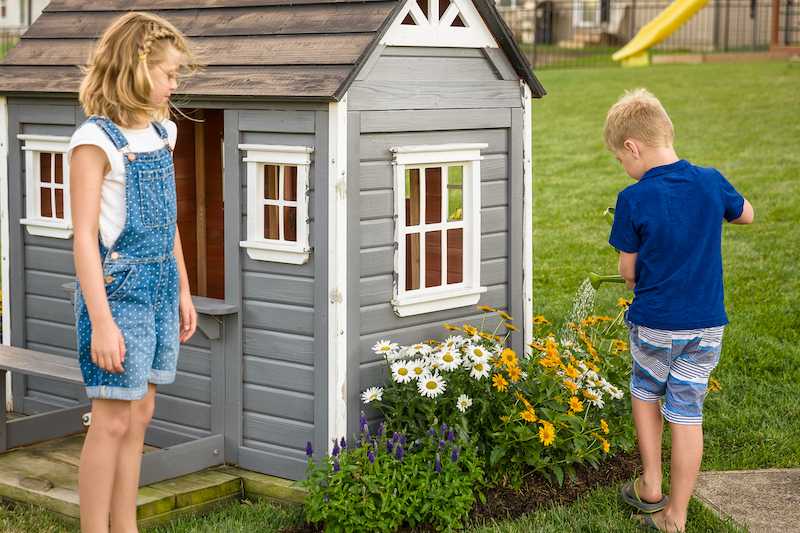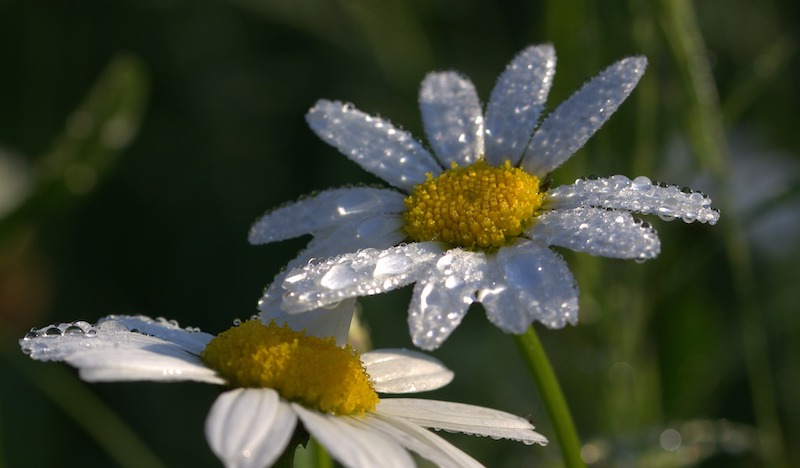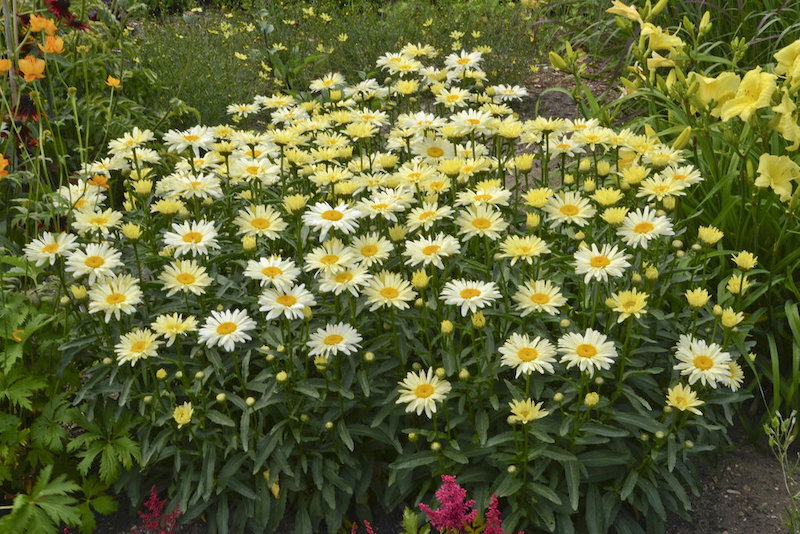Shasta Daisy is an herbaceous perennial that tolerates a wide range of moisture levels in the garden. Slightly damp areas at the edge of bog gardens or dry rock gardens on a slope are both perfect for growing the most beloved of all daisy plants. The shallow, fibrous root systems of Shasta Daisy spread wide in the soil to search for moisture and can be encouraged to grow deeper in the ground by using drip irrigation or soaker hoses.

How To Tell If Shasta Daisy Needs to be Watered
Shasta Daisy foliage and stems are tough and able to withstand short periods of drought. When their leaves begin drooping, it is not difficult to revive the plants if action is taken quickly. Leaves that droop and begin to curl slightly at the edges are the first signs that Shasta Daisies need watering. The older leaves will also begin to yellow and may even develop a crisp brown margin that indicates a lack of water for an extended time. Flowers and buds will droop on the stem and will fail to open if the plant is left dry for an extended period. The soil in containers may dry out and begin to pull away from the pot.
How Often To Water Shasta Daisy
Newly planted Shasta Daisies will require supplemental watering until the root system is well established. This could be anywhere from a few weeks to a few months, depending on the dryness of your climate. Watering every 2-3 days until the root zone is evenly soaked is generally sufficient.
Shasta Daisies, once well established, can become quite drought tolerant and may require almost no supplemental irrigation in growing zones that have rain or high humidity during the summer months. Deep watering once every 7 to 10 days may be needed during extended periods of drought. Mulching the root zone with organic materials such as shredded leaves or arborist chips early in the spring will help the soil retain moisture longer. Soil that is heavy and compacted will hold too much water during rainy periods and may cause root rot, especially in the winter when the soil is wet and cold. Amend heavy soil with compost to improve drainage.

Container-grown Shasta Daisy will need to be checked for watering much more often. Containers dry out more quickly than garden soil due to the smaller volume of soil. Water the containers until water flows from the bottom drainage holes to ensure that all of the soil has been saturated.
Best Time To Water Shasta Daisy
Watering plants early in the day helps them to recover from a night of transpiration and prepare for hotter daytime temperatures. The ground will also absorb water easier and quicker during a cool morning. Watering late in the day may be necessary during periods of extremely hot weather and should be done carefully to keep the foliage from getting wet. Foliage left damp overnight in cooler temperatures encourages mildew and fungal disease, which can rapidly travel between plants.

How to Water Shasta Daisy
Step 1 - Determine if the plant needs water.
Let the top 3-4 inches of soil dry between waterings to ensure proper drainage and air access for the root system. Water-stressed plants will need watering as soon as possible.
Step 2 - Use a soaker hose or drip irrigation.
Targeting water to the root zone and soil reduces the evaporation of water, reduces water bills, and keeps the foliage from getting wet and becoming susceptible to disease.
Step 3 - Apply a 2-3-inch layer of mulch over the root zone.
The mulch will cool the soil and slow the rate of evaporation. Mulching also helps to suppress weeds that compete for moisture in the soil.
Shasta Daisy Watering Tips
- Check moisture levels once a week for garden-grown daisies and once a day for container-grown plants.
- Allow the top 3-4 inches of soil to dry between watering sessions.
- Shasta Daisies growing in humid or rainy climates will require far less supplemental watering.
 |
Author Robbin Small - Published 3-13-2023 |
